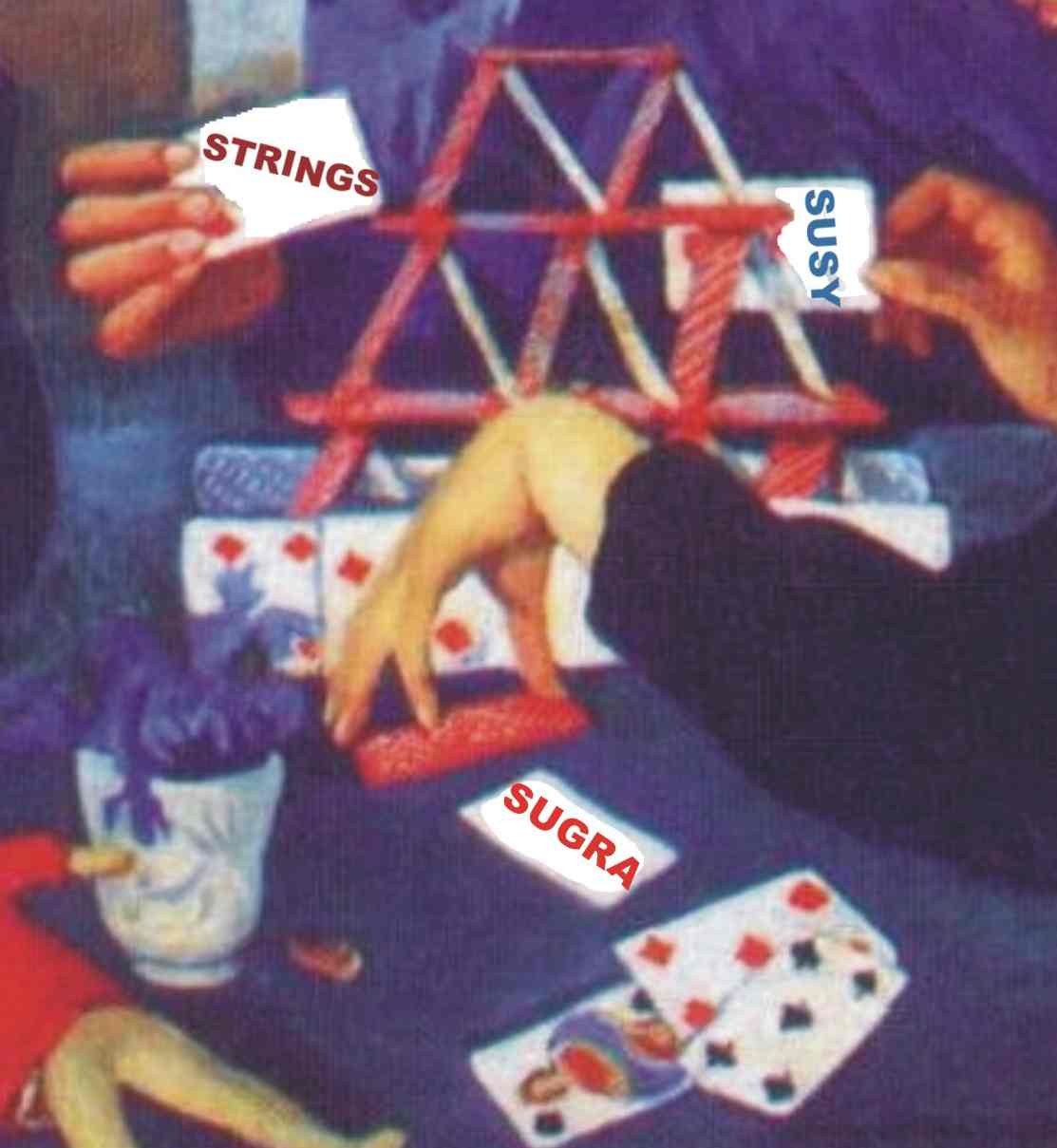 |
|
|
|
|
|
|
|
Dubna, July 14-26, 2005 |
||||||
|
|
|
|
|
|||
 |
|
|
|
|
|
|
|
Dubna, July 14-26, 2005 |
||||||
|
|
|
|
|
|||
I.
Buchbinder (Tomsk)
Introduction to
Supersymmetric Field Theory (6 lectures)
1. General physical idea of supersymmetry. Lorentz and Poincare groups. Two-component spinors. Lie algebra of Poincare group and its irreducible unitary representations.
2. Superalgebra. Irreducible representations of supersymmetry. Elements of algebra and analysis with anticommuting variables.
3. Superspace and superfields. Component structuire of superfield. Supersymmetry generators and supercovariant derivatives. Chiral and general scalar superfields.
4. Field theory in superspace. Wess-Zumino model. Supersymmetric sigma-model. Supersymmetric gauge theories.
5. Supersymmetric quantum field theory. Superfield perturbation theory. Superpropagators. Supergraphs.
6. Renormalization of supersymmetric field theories. Supersymmetric background field method. Nonrenormalization theorem. Superfield effective potential.
Training
session leaders : I. Samsonov
Lecture 1. Extended SUSY: motivations and uses. Coleman-Mandula no-go theorem and how to evade it. Representations on one-particle states: massive and massless. Self-conjugated multiplets and N=8 barrier. Extended SUSY in 4D via dimensional reduction from $D > 4$. Field theory realizations, physical and auxiliary fields.
Lecture 2. Superspaces of N=2 SUSY: conventional and harmonic. Merits of off-shell superfield formulations. Grassmann harmonic analyticity as the true N=2 analog of N=1 chirality. N=2 hypermultiplet on shell and off shell, infinite number of auxiliary fields as a price for off-shell unconstrained formulation. Most general hypermultiplet action and hyper K\"ahler sigma models.
Lecture 3. Geometric principles underlying N=0 and N=1 gauge theories. N=2 SYM theory from preserving harmonic analyticity. Wess-Zumino gauge. Superfield and component actions. Maximally extended N=4 SYM theory in N=2 superfield formualtion.
Lecture 4. Elements of quantum theory in harmonic superspace. Fixing the gauge, superfield FP ghosts, vertices and propagators. Simplest Feynman supergraphs. Basic idea of non-renormalization theorems.
Lecture 5. Supergravity as supersymmetrization of Einstein theory. Questions to be answered. N=1 supergravity, the method of conformal compensators. From conformal N=2 SG to N=2 Poincar\'e SG. Maximally extended N=8 SG.
Lecture 6. N=3 harmonic analyticity. The
N=3 SYM off-shell action as the harmonic analog of Chern-Simons action.
Ultraviolet finiteness made manifest.
Lecture 1 (90 min.) : The twistor
construction (Christian Saemann)
- basics of complex geometry
- twistor space, flag manifolds, twistor
correspondence
- Penrose transformation
- supermanifolds
Lecture 2 (90 min.) : Twistor gauge
fields (Martin Wolf)
- (self-dual) super Yang-Mills actions
- Penrose-Ward transformation
- holomorphic Chern-Simons theory
- relation with topological B-model
Lecture 3 (90 min.) : Twistor string
fields (Olaf Lechtenfeld)
- basics of string field theory
- open N=2 strings
- Berkovits-Siegel string field theory
- cubic supertwistor N=2 string field theory
2. Symmetries, constraints and quantization of
the dynamics of relativistic objects
- the Dirac analysis;
- quantization and the quantum spectrum of bosonic
and spinning particles;
- kappa-symmetry and the problem of covariant
quantization of superparticles.
3. Bosonic string theory
- action, symmetries, equations of motion
- constraints
- conformal invariance
4. Canonical quantization of the bosonic string
- gauge fixing and the conservation of the string
symmetries in quantum theory
- quantum anomalies and the critical dimension
of space--time
M.Vasiliev
(LPI, Moscow)
Intruduction into
higher-spin theory (5 lectures)
An elementary
introduction into theory of higher spin gauge fields will be given. A particular
emphasize will be on the MacDowell-Mansouri formulation of gravity in anti-de
Sitter space and its generalization to the case of higher spin gauge fields.
The related concepts such as Young tableaux, star product and unfolded
formulation of dynamical systems will be introduced.
Training
session leaders : O. Shaynkman*, K.Alkalaev, A. Matveev*,
S. Didenko*
* to
be confirmed